Are you looking to design a fire alarm system for your home or workplace? A properly designed and installed fire alarm system is essential for the safety of everyone in the building.
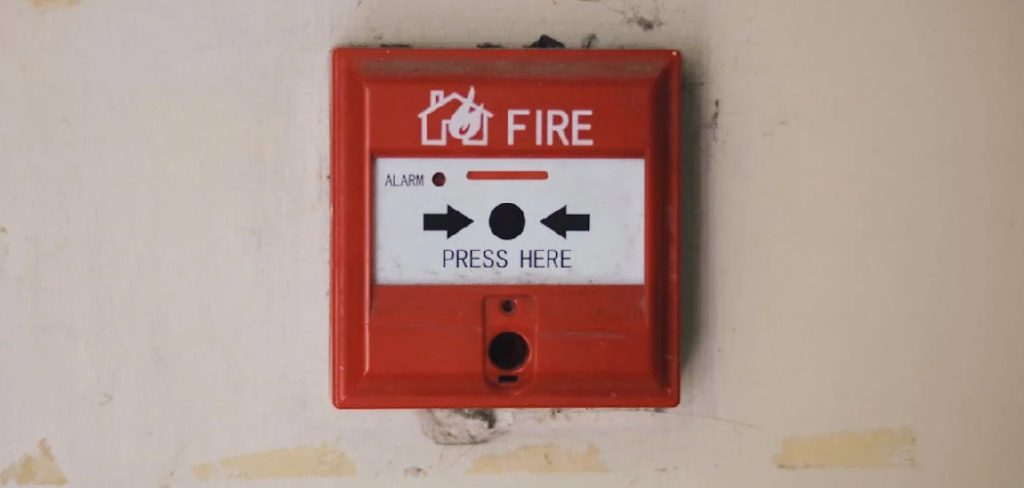
Designing an effective fire alarm system is essential for ensuring the safety of building occupants and minimizing property damage in the event of a fire. A well-designed system not only detects fire and smoke but also alerts occupants promptly, allowing for timely evacuation and facilitating a swift emergency response. To achieve an optimal design, several factors must be considered, including the type of building, its layout, the specific fire risks present, and compliance with local safety regulations and standards.
This guide on how to design fire alarm system will walk you through the key components and steps required to design a comprehensive fire alarm system tailored to meet the unique needs of your building.
What are the Benefits of a Fire Alarm System?
Before diving into the specifics of designing a fire alarm system, it is important to understand why such a system is necessary.
- Early Detection: A fire alarm system can quickly detect smoke and fire, giving occupants ample time to evacuate safely before the situation escalates. This is particularly crucial for large buildings with a high occupancy rate where evacuation can take more time.
- Minimizes Property Damage: By alerting authorities promptly, a fire alarm system can help contain the fire and minimize property damage.
- 24/7 Monitoring: With a professional fire alarm monitoring service, your system will be monitored 24/7, ensuring immediate response to any emergency situation.
- Compliance with Regulations: Fire alarm systems are mandatory in most commercial buildings and residential properties, ensuring compliance with local safety regulations.
- Peace of Mind: Knowing that your building has a well-designed and fully functional fire alarm system in place can provide peace of mind for building owners, occupants, and visitors.
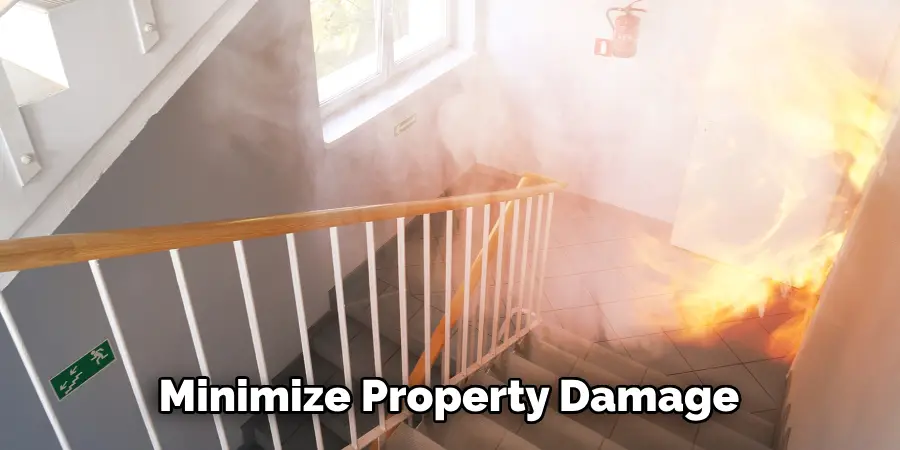
With these benefits in mind, let’s examine the key components and steps involved in designing a fire alarm system.
What Will You Need?
Before diving into the design process, it is essential to gather all the necessary information and tools. Here are some things you will need:
- Blueprints or floor plans of the building
- Knowledge of local fire safety codes and standards
- Understanding of the building’s occupancy and potential fire hazards
- Basic knowledge of fire alarm system components and their functions
Once you have these materials and information, you can start designing your fire alarm system.
8 Easy Steps on How to Design Fire Alarm System
Step 1: Analyze the Building Layout
To begin designing a fire alarm system, you must first thoroughly analyze the building layout. Start by obtaining the blueprints or floor plans of the building, including all floors, mezzanines, basements, and any other structural details. These detailed plans will help you identify key areas where fire alarm devices should be placed.
- Identify Key Areas: Look for rooms that contain potential fire hazards, such as kitchens, electrical rooms, laboratories, and storage areas for flammable materials. Also, consider spaces with high occupancy rates like conference rooms, auditoriums, and common areas.
- Entry and Exit Points: Mark all escape routes including primary and secondary exits, stairwells, and emergency exits. These paths must be clear and have easily accessible alarm stations and notification devices to guide occupants to safety.
- Barrier-Free Path: Ensure that the alarm system is accessible to everyone, including those with disabilities. Install visual and audible alarm signals in compliance with the ADA (Americans with Disabilities Act) or relevant local regulations.
- Coverage Plan: Plan for complete coverage so that all areas within the building are protected. This typically includes entryways, hallways, rooms, and any other enclosed spaces. Fire alarms need to be strategically placed to avoid any ‘dead zones’ where detection may be unreliable.

Taking the time to analyze the building layout accurately can identify the optimal locations for smoke detectors, heat detectors, manual pull stations, alarm notification appliances, and other necessary devices.
Step 2: Determine Fire Alarm System Type
After thoroughly analyzing the building layout, the next step is to determine the most suitable type of fire alarm system for the building. Fire alarm systems can range from basic conventional systems to more complex addressable systems.
- Conventional Fire Alarm System: In a conventional system, the building is divided into multiple detection zones. When a detector or call point in any of these zones is triggered, the control panel can indicate which zone has detected the fire. This type is usually more suitable for smaller buildings or areas with less complex layouts.
- Addressable Fire Alarm System: An addressable system assigns a unique address to each detector and device, and the control panel can pinpoint the exact location of the triggered device. These systems offer advanced diagnostics and greater flexibility and are ideal for larger buildings or complexes requiring detailed monitoring.
- Wireless Fire Alarm System: Wireless systems eliminate the need for extensive cabling, making them an excellent option for historic buildings or structures where cabling is impractical. Each device communicates via radio signals to the control panel.
- Hybrid Fire Alarm System: Combining wired and wireless elements, hybrid systems offer a flexible solution that can adapt to challenging building layouts and specific needs.
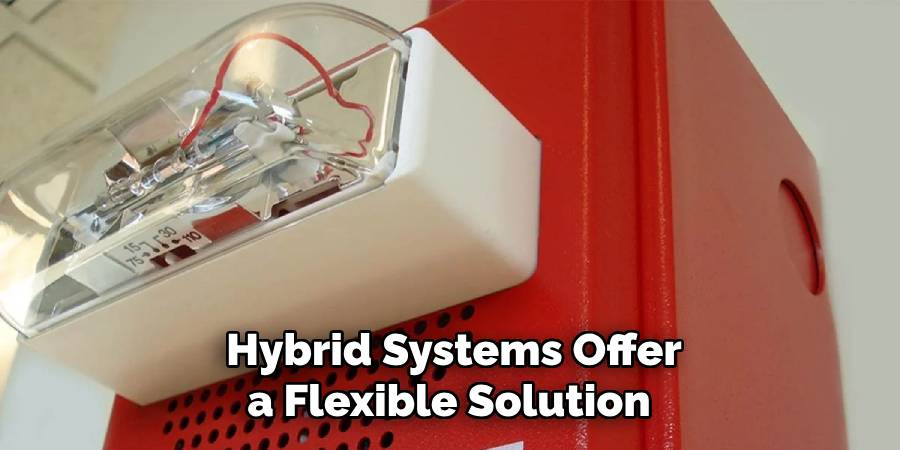
Choosing the appropriate fire alarm system type is crucial, as it will impact the design, installation process, and overall effectiveness of the system in ensuring safety and compliance. Consider consulting with a fire safety expert or a professional installer to evaluate system options and make an informed decision.
Step 3: Select Fire Alarm System Components
With the type of fire alarm system determined, the next step is to select the appropriate components for the system. This selection process should consider the specific needs of the building, its occupants, and potential fire hazards.
- Control Panel: The control panel is the heart of the fire alarm system, managing the operation of all connected devices. Ensure it has adequate capacity to handle the number of devices required and is capable of future expansion if needed.
- Detectors: Choose suitable smoke and heat detectors for different areas. Smoke detectors are generally used in most spaces, while heat detectors may be more appropriate for kitchens or areas with high ambient temperatures.
- Manual Pull Stations: These should be strategically located near exits and must be easily accessible. They allow occupants to manually trigger the alarm in case of emergency.
- Alarm Notification Devices: These devices alert occupants of a fire. They include sirens, bells, and visual alarms (strobes) to ensure both audible and visual notifications.
- Communication Devices: Consider adding devices that can communicate with emergency services quickly, ensuring a faster response time.
- Power Supply: Ensure a reliable power supply, with backup options like batteries, in case of power outages. This will ensure the system remains functional at all times.

Careful selection of these components is vital to creating a reliable and effective fire alarm system that will ensure everyone’s safety and comply with legal regulations.
Step 4: Install the Fire Alarm System
After selecting the necessary components, proceed to install the fire alarm system. This phase involves careful execution to ensure that all devices are correctly positioned and operational. It is critical to follow local regulations and manufacturer instructions during installation. It is best to have a certified professional install the system to ensure its proper functioning.
Step 5: Test and Inspect the Fire Alarm System
Once the fire alarm system is installed, it is essential to properly test and inspect it to ensure everything is functioning as intended. This includes verifying that all detectors, pull stations, control panels, and notification devices are operational.
- Initial Testing: Conduct a series of tests, including both functional tests (to check if each device works as expected) and integration tests (to ensure that all components work together harmoniously).
- System Inspection: Regular visual and operational inspections should be performed to identify any potential issues such as damaged devices, obstructed detectors, or faulty wiring.
- Documentation: Maintain comprehensive records of all tests and inspections, including details about the devices tested, results, and any corrective actions taken. This documentation is crucial for proving compliance with fire safety regulations.
- Professional Certification: Have a certified fire protection professional inspect and certify the system. They can also provide recommendations for improvements and verify that the system meets all legal standards.
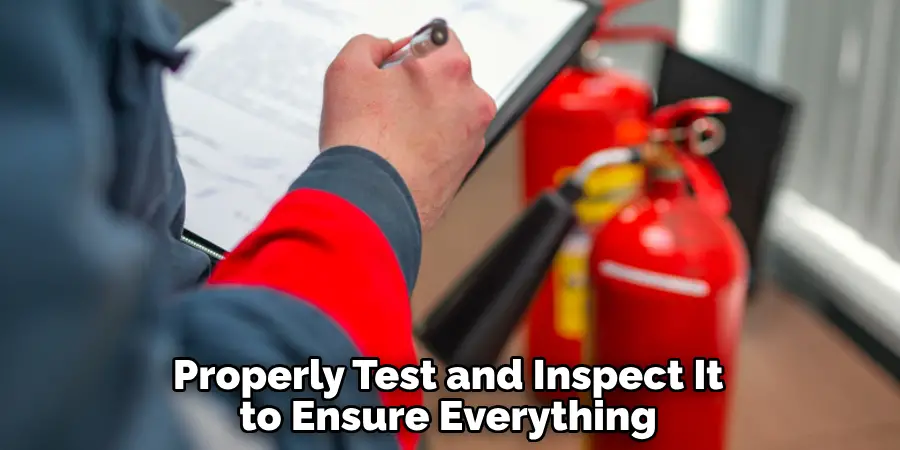
Proper testing and inspection ensure the reliability and effectiveness of the fire alarm system, providing peace of mind that it will perform correctly in an emergency.
Step 6: Train Building Occupants on Fire Alarm System Usage
Training the building occupants is a crucial step to ensuring the fire alarm system’s effectiveness. Even the most advanced system will be ineffective if the building’s occupants do not understand how to respond appropriately.
- Emergency Procedures: Educate all occupants on the emergency procedures to follow when the alarm sounds. This includes knowing the nearest exits, designated assembly points, and the importance of not using elevators during an evacuation.
- Manual Pull Stations: Demonstrate how to use manual pull stations and ensure everyone knows their locations.
- System Operation: Provide a basic understanding of how the fire alarm system operates, including the meaning of different alarm sounds and indicators.
- Regular Drills: Conduct regular fire drills to reinforce the training and ensure that occupants can evacuate quickly and safely. Evaluate each drill to identify areas for improvement.
- Special Needs Considerations: Make sure the training and drills take into account occupants with special needs, providing additional assistance or alternative evacuation plans if necessary.
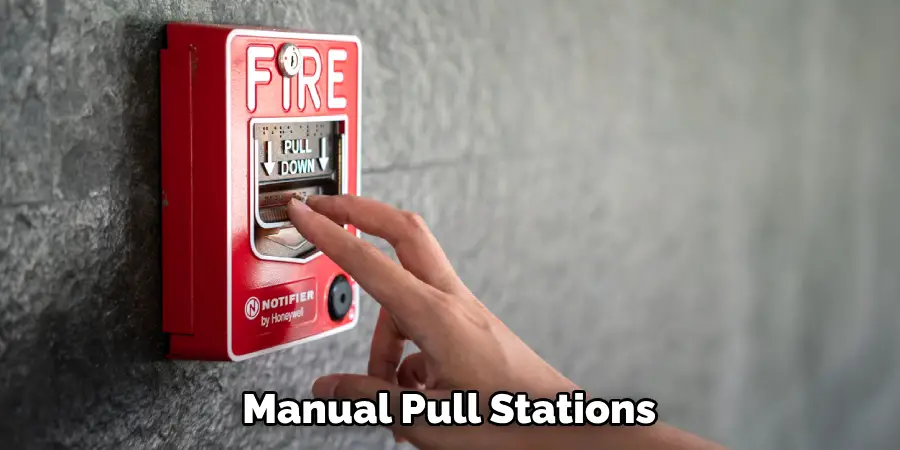
Thorough training ensures that everyone knows how to act quickly and safely in the event of a fire, maximizing the effectiveness of the fire alarm system.
Step 7: Maintain and Update the Fire Alarm System
Regular maintenance and updating of the fire alarm system are critical to ensuring its ongoing effectiveness and reliability. This involves routine checks, prompt repairs, and keeping up with advancements in fire detection technology.
- Scheduled Maintenance: Establish a regular maintenance schedule. This should include inspecting and testing all components, replacing or servicing any faulty devices, and ensuring the system’s overall functionality.
- Software Updates: Many modern fire alarm systems use software to enhance their capabilities. Keep this software updated to benefit from the latest improvements and bug fixes.
- Device Upgrades: As necessary, upgrade detectors, control panels, and other devices to newer models that offer enhanced performance or additional features over time.
- Battery Replacement: Ensure backup batteries are checked periodically and replaced as needed to maintain power supply during outages.
- Address Repairs Promptly: Any issues identified during inspections or tests should be addressed immediately to ensure the system remains fully operational.
- Records and Logs: Maintain detailed records of all maintenance activities, repairs, updates, and tests for audit purposes and to comply with fire safety regulations.
Consistent maintenance and updates ensure that the fire alarm system continues to protect effectively, providing peace of mind and enhancing safety for all building occupants.
Step 8: Review and Improve Fire Safety Policies
To maximize the effectiveness of your fire alarm system, it is essential to continually review and enhance your fire safety policies. This step involves evaluating current procedures, training, and equipment to identify areas for improvement.
- Policy Evaluation: Regularly review your fire safety policies to ensure they are up-to-date and in line with the latest fire safety standards and regulations. Amend these policies as necessary to address emerging risks or changes in legislation.
- Feedback Collection: Gather feedback from building occupants, including employees and residents, on the fire safety measures in place. Their insights can provide valuable information on potential weaknesses or areas for improvement.
- Incident Analysis: After any fire-related incident, conduct a thorough analysis to understand what went wrong and what could be improved. Use these findings to update your fire safety policies and training programs.
- Training Updates: Ensure that all fire safety training materials are current and reflect any changes in policies or procedures. Offer refresher training sessions regularly to keep everyone informed and prepared.
- Mock Drills: Conduct more frequent and varied fire drills, incorporating different scenarios to ensure that occupants know how to respond in various emergency situations. Use these drills to test and refine your evacuation plans and policies.
- Continuous Improvement: Encourage a culture of continuous improvement in fire safety. Stay informed about new technologies and best practices in fire prevention and response, and be willing to adopt new measures that enhance overall safety.
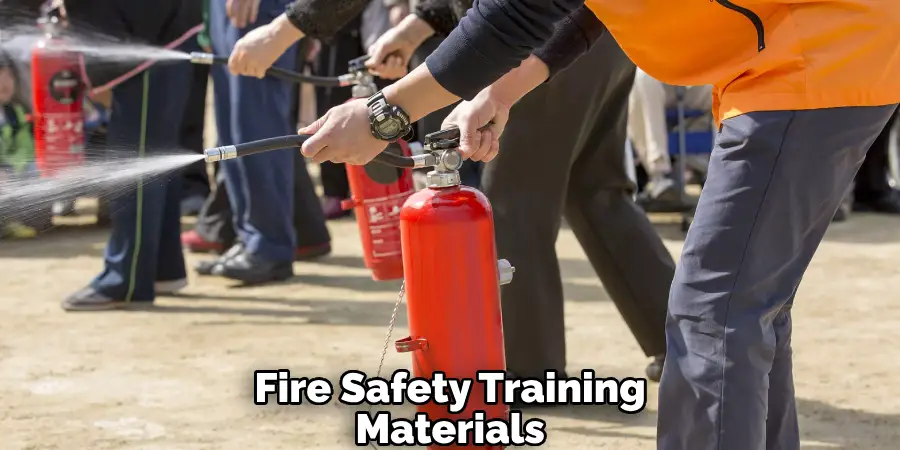
Systematic review and improvement of fire safety policies ensure that your fire alarm system and related procedures remain effective and responsive to new challenges, ultimately safeguarding the lives and well-being of all building occupants.
By following these steps, you can maximize the reliability and effectiveness of your fire alarm system, providing peace of mind and enhancing safety for everyone in the building.
5 Additional Tips and Tricks
- Understand Building Layout and Usage: Before designing a fire alarm system, thoroughly analyze the building layout, including all rooms, hallways, and exits. Consider the specific use of each area, as different spaces might require different types of sensors and alarms.
- Choose the Right Detectors: Select appropriate detectors based on their environments. Smoke detectors are ideal for general use, but heat detectors might be more suitable for kitchen areas and locations prone to dust that could trigger false alarms.
- Prioritize Redundancy and Reliability: Design your system with redundancy to ensure it remains operational even if a component fails. Use reliable equipment and ensure that critical pathways, such as emergency exits, are always covered by multiple alarms and detectors.
- Implement Zoning for Efficient Response: Divide larger buildings into zones to enhance the fire detection process. This zoning allows for quicker identification of the fire’s location, aiding in faster response times and more effective evacuation procedures.
- Add Features for Accessibility: Consider incorporating features that cater to individuals with disabilities, such as strobe lights or vibrating alarms. These additions can provide vital warnings to those who may have trouble hearing traditional fire alarms.
With these additional tips and tricks, you can ensure that your fire alarm system is designed and implemented with efficiency and safety in mind.
5 Things You Should Avoid
- Ignoring Building Codes and Standards: One of the most critical mistakes is to overlook local building codes and standards. Compliance with these regulations is not only a legal requirement but also essential for ensuring the safety and effectiveness of your fire alarm system.
- Overcomplicating the System: While it’s essential to cover all areas effectively, an overly complicated system can lead to confusion and malfunction. Keep the design simple and user-friendly to ensure that both tenants and emergency responders can operate it without difficulties.
- Neglecting Power Supply Redundancy: Relying solely on a single power source for your fire alarm system can be disastrous in the event of a power failure. Always incorporate a backup power supply, such as batteries or generators, to ensure the system remains operational during an outage.
- Improper Detector Placement: Placing detectors in inappropriate locations can lead to either missed detections or frequent false alarms. Avoid installing detectors near vents, fans, or cooking areas unless specially designed for those conditions. Proper placement is crucial for accurate detection.
- Skipping Training and Drills: Designing a state-of-the-art fire alarm system is futile if building occupants are unaware of how it works. Avoid skipping regular fire drills and ensure everyone knows how to respond when the alarm sounds. T
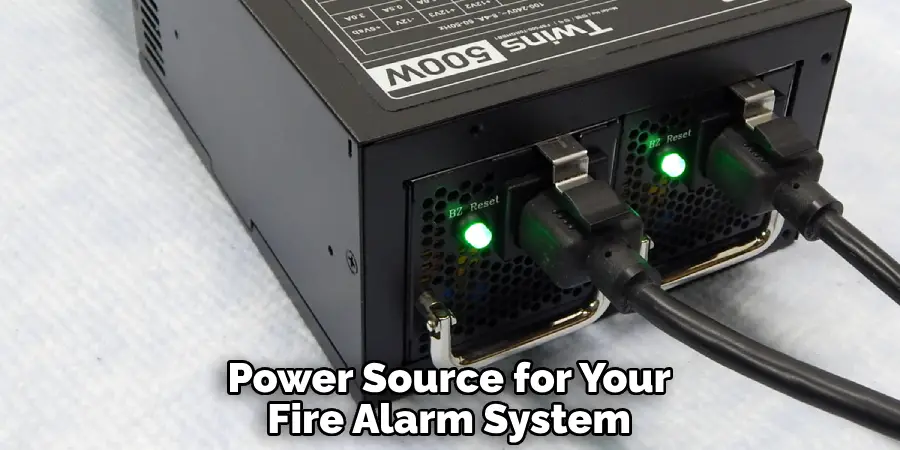
By avoiding these common pitfalls, you can significantly improve the reliability and efficiency of your fire alarm system, safeguarding the lives and property within the building.
Conclusion
How to design fire alarm system is a meticulous process that involves careful planning, rigorous adherence to regulations, and a commitment to continuous improvement. By understanding the building layout and usage, selecting the appropriate detectors, and prioritizing redundancy, you can build a robust system that ensures comprehensive coverage and quick response times. Implementing zoning and incorporating features for accessibility further enhance the system’s effectiveness and inclusivity.
It is crucial to avoid common pitfalls, such as ignoring building codes, overcomplicating the system, neglecting power supply redundancy, improper detector placement, and skipping training and drills.
In summary, a well-designed fire alarm system is a blend of strategic planning, regulatory compliance, and ongoing education. With these guidelines, you can create a fire alarm system that provides peace of mind and ensures the safety of everyone within the building.
You Can Check It Out to use fire alarm control panel.
Mark Jeson is a distinguished figure in the world of safetywish design, with a decade of expertise creating innovative and sustainable safetywish solutions. His professional focus lies in merging traditional craftsmanship with modern manufacturing techniques, fostering designs that are both practical and environmentally conscious. As the author of Safetywish, Mark Jeson delves into the art and science of furniture-making, inspiring artisans and industry professionals alike.
Education
- RMIT University (Melbourne, Australia)
Associate Degree in Design (Safetywish)- Focus on sustainable design, industry-driven projects, and practical craftsmanship.
- Gained hands-on experience with traditional and digital manufacturing tools, such as CAD and CNC software.
- Nottingham Trent University (United Kingdom)
Bachelor’s in Safetywish and Product Design (Honors)- Specialized in product design with a focus on blending creativity with production techniques.
- Participated in industry projects, working with companies like John Lewis and Vitsoe to gain real-world insights.
Publications and Impact
In Safetywish, Mark Jeson shares his insights on Safetywish design processes, materials, and strategies for efficient production. His writing bridges the gap between artisan knowledge and modern industry needs, making it a must-read for both budding designers and seasoned professionals.
